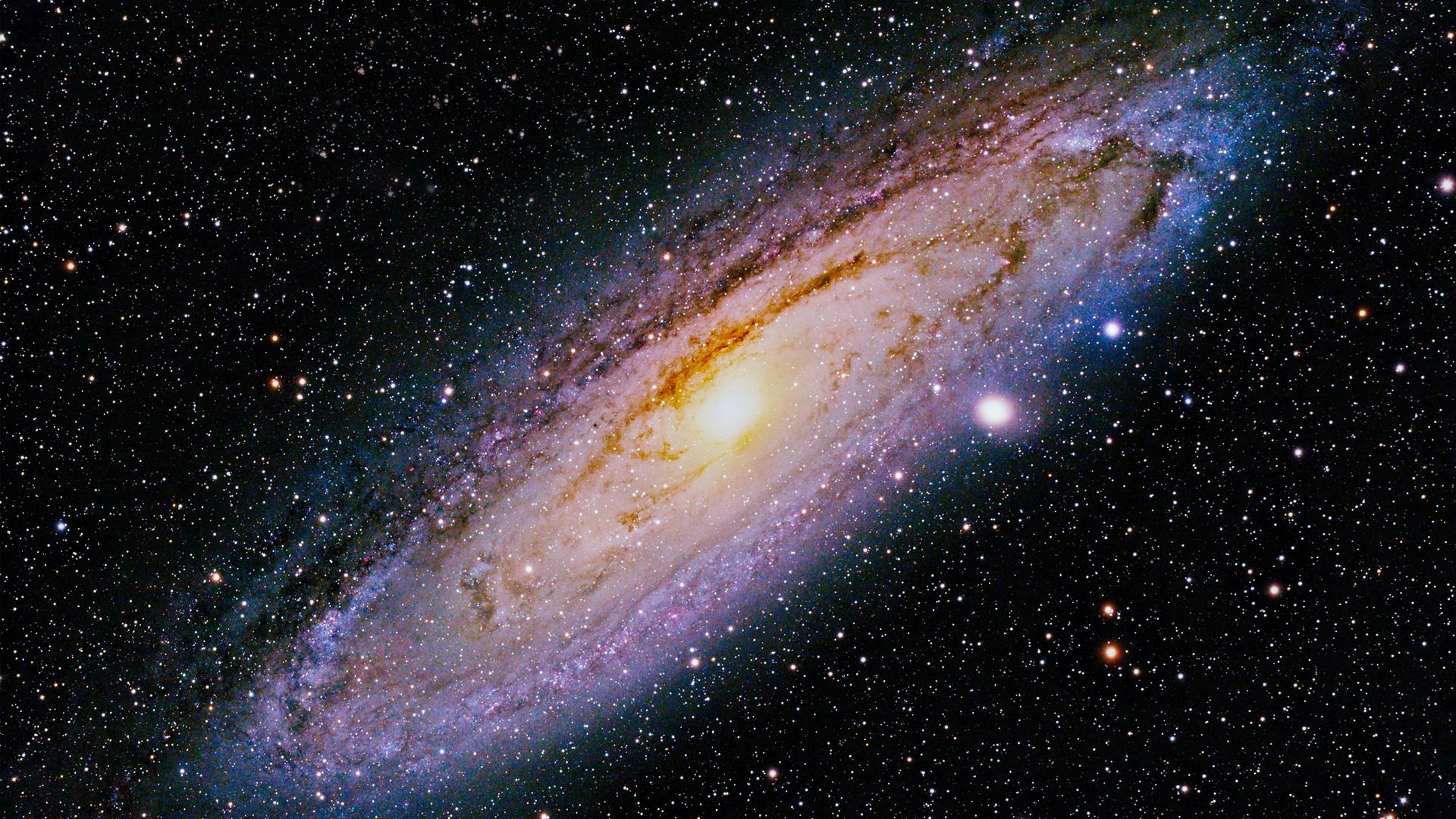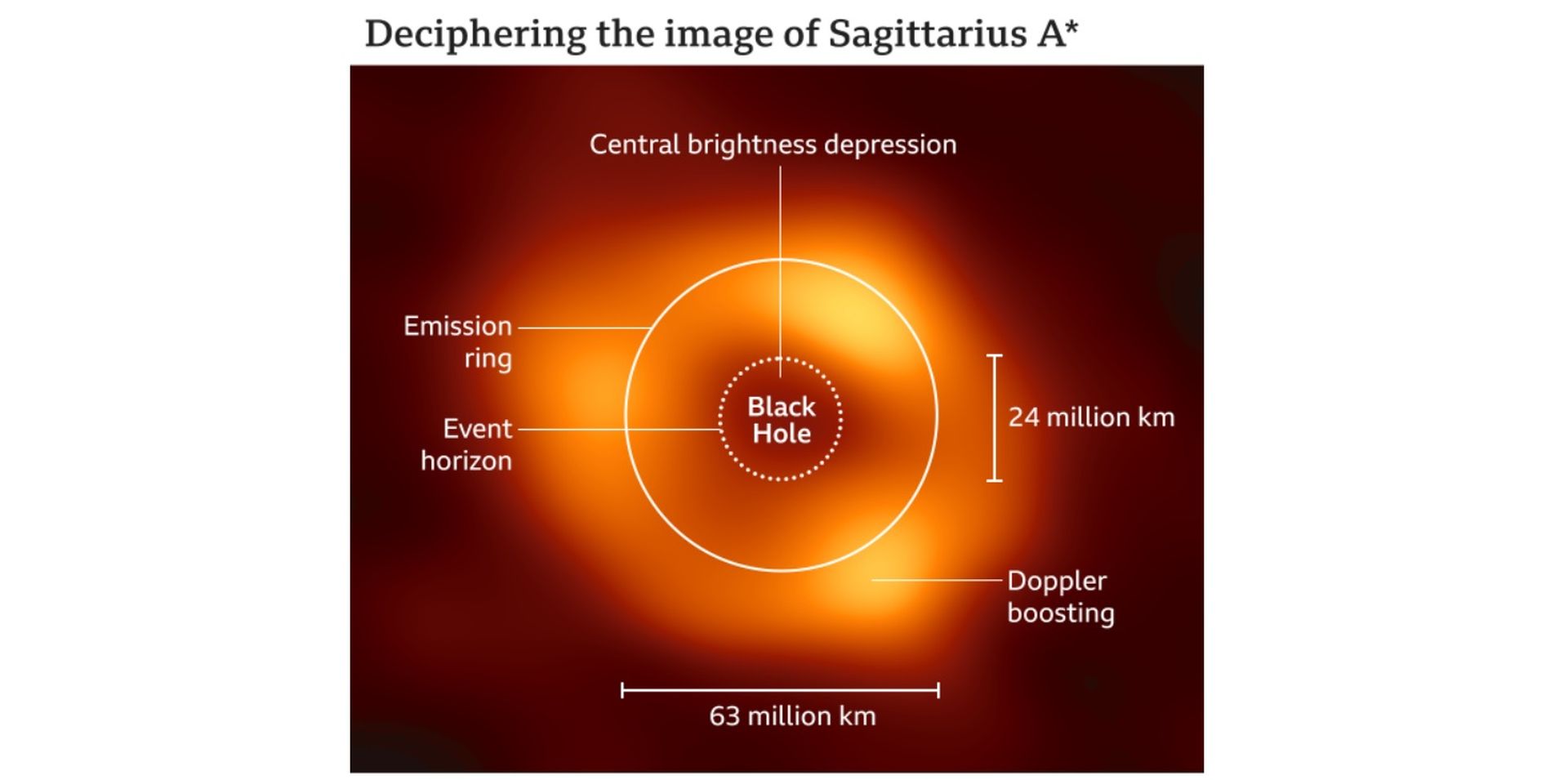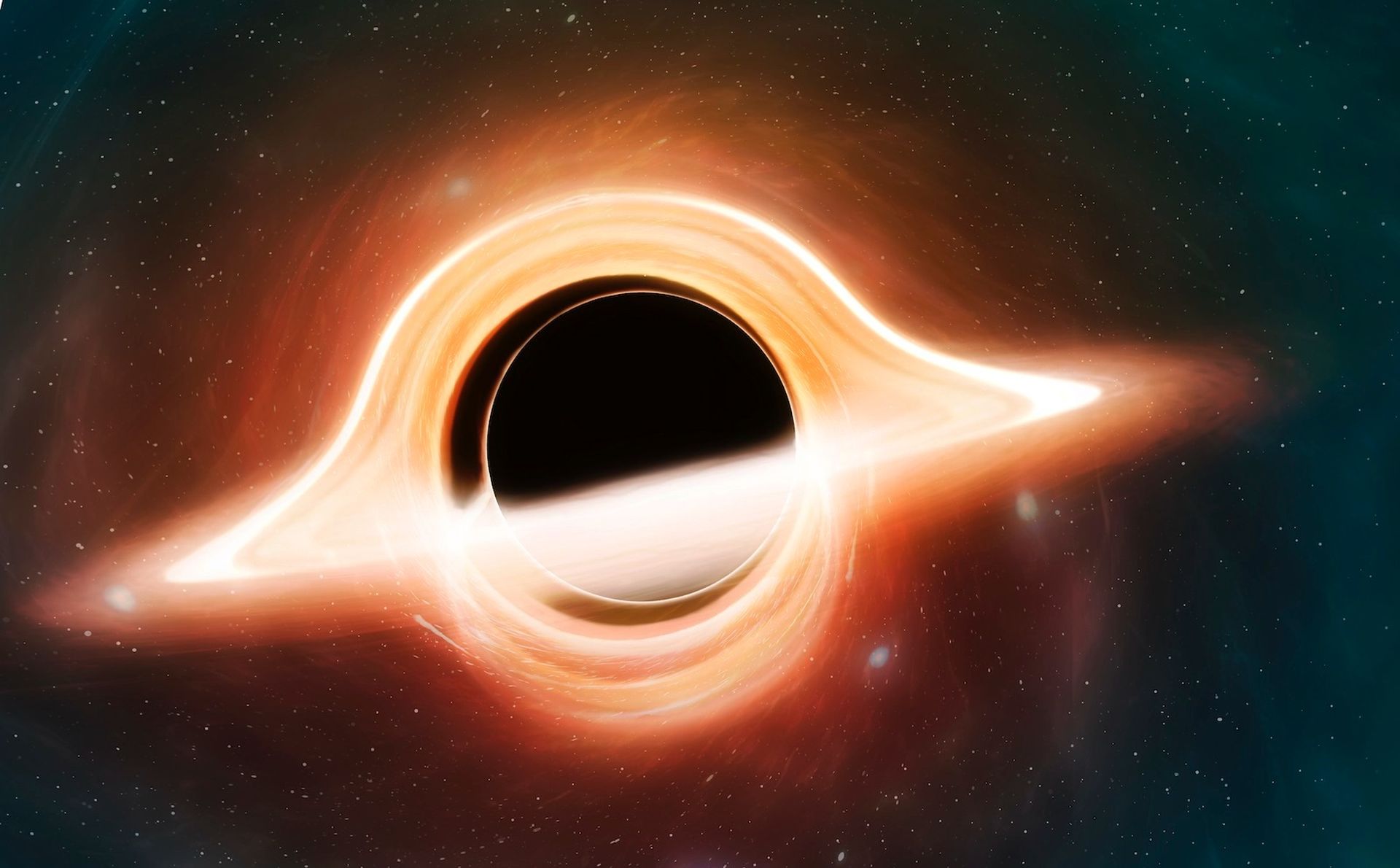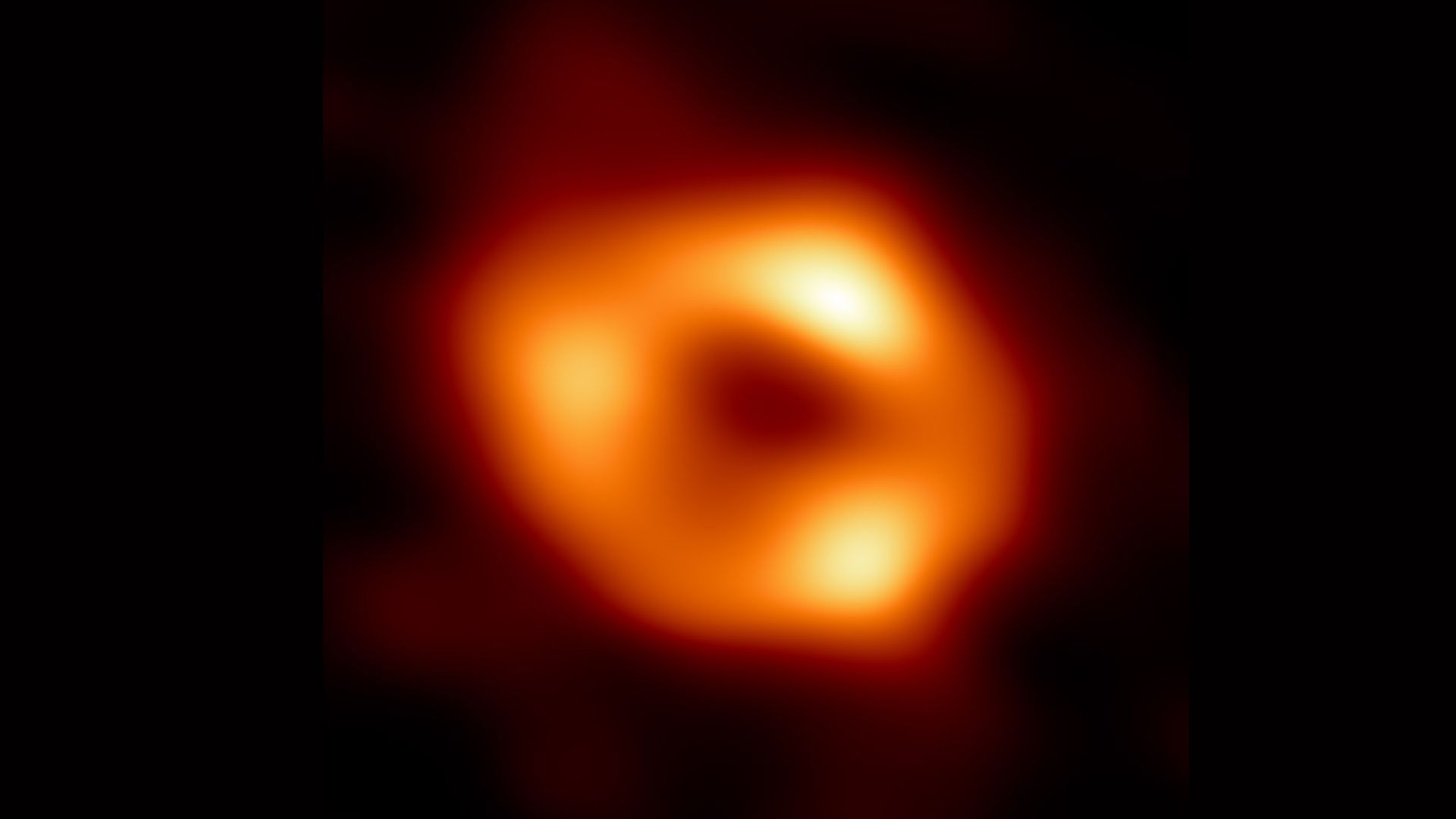Scientists have managed to picture Saggittarius A*, a supermassive black hole that lives at the center of our Milky Way galaxy. It is a staggering black hole, four million times the mass of our Sun.
This monster lives at the center of our Milky Way galaxy
You’re looking at a dark center area where the hole is, which is surrounded by light streaming from extremely hot gas accelerated by colossal gravitational forces. For comparison, the ring is roughly the same size as Mercury’s orbit around our Sun.
That’s a distance of 40 million miles (around 60 km). Fortunately, since this supermassive black hole is so far away – some 26,000 light-years in the future – there’s no chance that we’ll come into any peril.
The image was produced by an international team called the Event Horizon Telescope (EHT) collaboration.

The second picture of the year is of a supermassive black hole at the center of another galaxy, Messier 87, also known as M87. That thing was over a thousand times larger than our Sun in terms of size.
“But this new image is special because it’s our supermassive black hole,” explained Prof Heino Falcke, one of the EHT project’s European pioneers.
“This is in ‘our backyard’, and if you want to understand black holes and how they work, this is the one that will tell you because we see it in intricate detail,” Falcke told to BBC News.
What is a supermassive black hole?
The term “supermassive black hole” refers to a region of space where matter has collapsed in on itself. Because it is so strong, nothing, not even light, can escape the gravitational pull of a supermassive black hole. Supermassive black holes will result from the catastrophic destruction of massive stars. Some, on the other hand, are tremendously huge and have billions of times the mass of our Sun. It’s unclear how these supermassive black holes are formed.
The picture is a technical tour de force. It has to be. At a distance of 26,000 light-years from Earth, Sagittarius A*, or Sgr A* for short, is a tiny pinprick on the sky. To discern such a target requires incredible resolution. The EHT’s trick is a technique called very long baseline array interferometry (VLBI).
The photo is a technical marvel. It has to be. Sagittarius A*, or Sgr A* for short, is a tiny pinpoint in the night sky at 26,000 light-years away from Earth. To spot such a target with such precision necessitates tremendous resolution. The EHT uses a method called very long baseline array interferometry (VLBI) to achieve the task. In essence, this is a network of eight widely separated radio antennas that simulates the size of our planet’s telescope.
The elevation angle of the EHT is very high, which means it can cut an angle on the sky that is measured in microarcseconds. Team members say they have a clarity of vision comparable to that of seeing a bagel on the Moon’s surface.
Even then, constructing a digital photograph from several petabytes (1 PB = 1 million GB) of data requires the use of atomic clocks, smart algorithms, and an eternity of supercomputing power.
 The darkness of a supermassive black hole bends light, forming an accretion disc. There is nothing to observe but a “shadow,” but the brightness of the matter flying around this darkness and stretching out into a circle, known as an accretion disk, reveals where the object is.
The darkness of a supermassive black hole bends light, forming an accretion disc. There is nothing to observe but a “shadow,” but the brightness of the matter flying around this darkness and stretching out into a circle, known as an accretion disk, reveals where the object is.
You might be wondering what’s new in the updated picture of M87 when you compare it to the old one. There are, however, significant differences.
“Because Sagittarius A* is a much smaller black hole – it’s around a thousand times smaller – its ring structure changes on timescales that are a thousand times faster. It’s very dynamic. The ‘hotspots’ you see in the ring move around from day to day,” said Dr Ziri Younsi from University College London.
This may be seen from the team’s calculations of what you would see if you were able to place yourself at the center of our Milky Way galaxy and observe the situation with eyes sensitive to radio frequencies.
At a rate of 190,000 mph (about 300,000 km/s), the super-heated, enthused gas in the ring is whirling about the supermassive black hole. The brighter regions are most likely sites where material is flowing towards us and where its light emission is being energised or “doppler boosted,” as a result.
These rapid variations near Sgr A* are one of the reasons why it has taken so long to construct an image of M87. The interpretation of the data has been much more difficult.
By contrast, M87, at its greater size and distance of 55 million light-years, appears static when compared to M64.
Scientists are already using the findings in this picture to test contemporary theories of gravity. So far, what they’ve observed is entirely consistent with Einstein’s general relativity equations, which he first published in 1915.

For decades, we’ve known that a supermassive black hole exists at the center of the Milky Way galaxy. What else, but a supermassive black hole, could create forces that accelerate nearby stars through space at speeds of 24,000km/s (for comparison, our Sun travels around the Milky Way galaxy at a leisurely 230 kilometers per second or 140 miles per hour)?
Hundreds of stars will be circling the supermassive black hole at speeds of hundreds of thousands to billions of kilometers per hour. They’ll also look for signs of concentrated clusters of dark matter, as well as evidence that there are some star-sized supermassive black holes in the region.
“Every time we get a new facility that can take a sharper image of the Universe, we do our best to train it on the galactic centre, and we inevitably learn something fantastic,” explained Dr Jessica Lu from the University of California, Berkeley, US, who will lead the Webb campaign.
The EHT collaboration’s findings are being published in a special edition of The Astrophysical Journal Letters. By the way, did you know that NASA plans to destroy the International Space Station?





